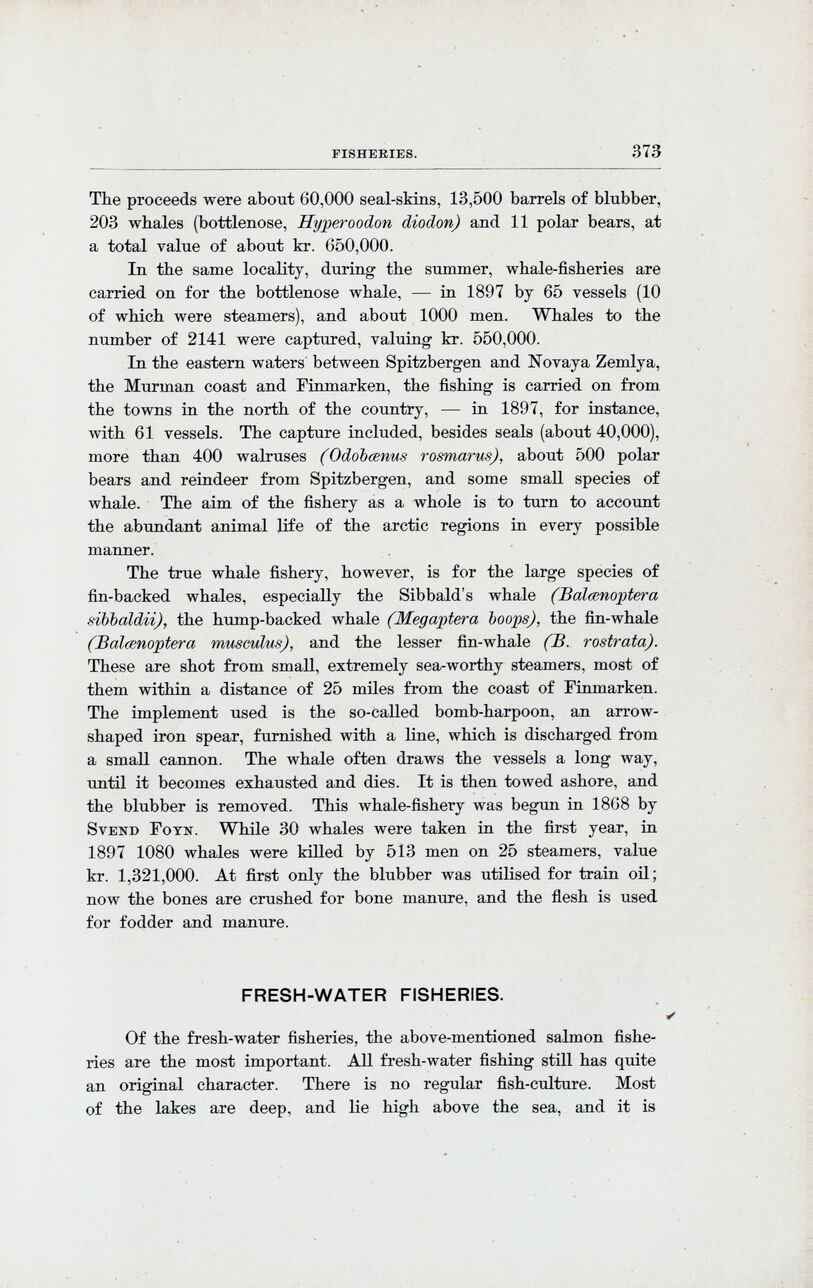
Full resolution (JPEG) - On this page / på denna sida - Fisheries, by Johan Hjort

<< prev. page << föreg. sida << >> nästa sida >> next page >>
Below is the raw OCR text
from the above scanned image.
Do you see an error? Proofread the page now!
Här nedan syns maskintolkade texten från faksimilbilden ovan.
Ser du något fel? Korrekturläs sidan nu!
This page has been proofread at least once.
(diff)
(history)
Denna sida har korrekturlästs minst en gång.
(skillnad)
(historik)
The proceeds were about 60,000 seal-skins, 13,500 barrels of blubber,
203 whales (bottlenose, Hyperoodon diodon) and 11 polar bears, at
a total value of about kr. 650,000.
In the same locality, during the summer, whale-fisheries are
carried on for the bottlenose whale, — in 1897 by 65 vessels (10
of which were steamers), and about 1000 men. Whales to the
number of 2141 were captured, valuing kr. 550,000.
In the eastern waters between Spitzbergen and Novaya Zemlya,
the Murman coast and Finmarken, the fishing is carried on from
the towns in the north of the country, — in 1897, for instance,
with 61 vessels. The capture included, besides seals (about 40,000),
more than 400 walruses (Odobænus rosmarus), about 500 polar
bears and reindeer from Spitsbergen, and some small species of
whale. The aim of the fishery as a whole is to turn to account
the abundant animal life of the arctic regions in every possible
manner.
The true whale fishery, however, is for the large species of
fin-backed whales, especially the Sibbald’s whale (Balænoptera
sibbaldii), the hump-backed whale (Megaptera boops), the fin-whale
(Balænoptera musculus), and the lesser fin-whale (B. rostrata).
These are shot from small, extremely sea-worthy steamers, most of
them within a distance of 25 miles from the coast of Finmarken.
The implement used is the so-called bomb-harpoon, an
arrow-shaped iron spear, furnished with a line, which is discharged from
a small cannon. The whale often draws the vessels a long way,
until it becomes exhausted and dies. It is then towed ashore, and
the blubber is removed. This whale-fishery was begun in 1808 by
Svend Foyn. While 30 whales were taken in the first year, in
1897 1080 whales were killed by 513 men on 25 steamers, value
kr, 1,321,000. At first only the blubber was utilised for train oil;
now the bones are crushed for bone manure, and the flesh is used
for fodder and manure.
<< prev. page << föreg. sida << >> nästa sida >> next page >>